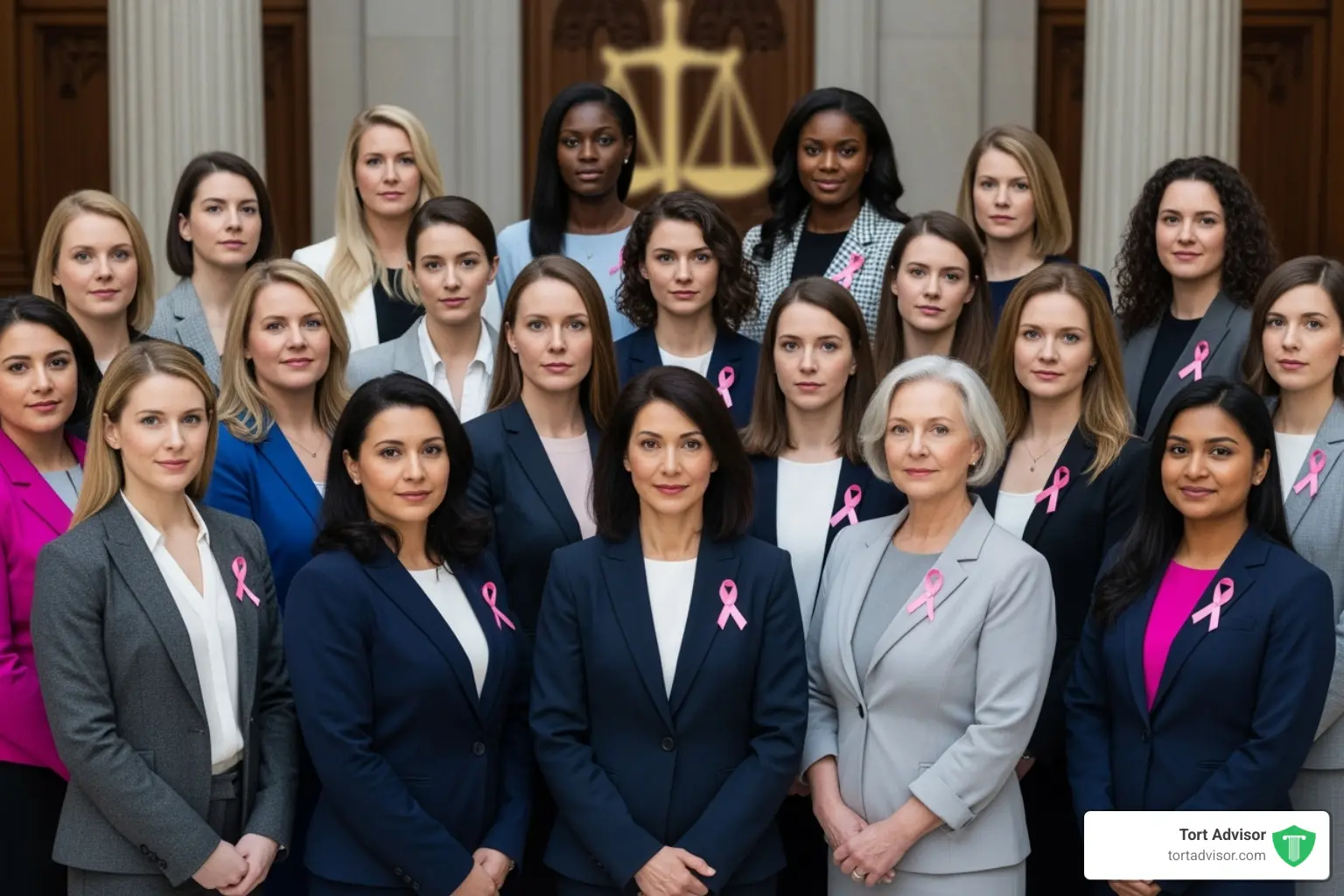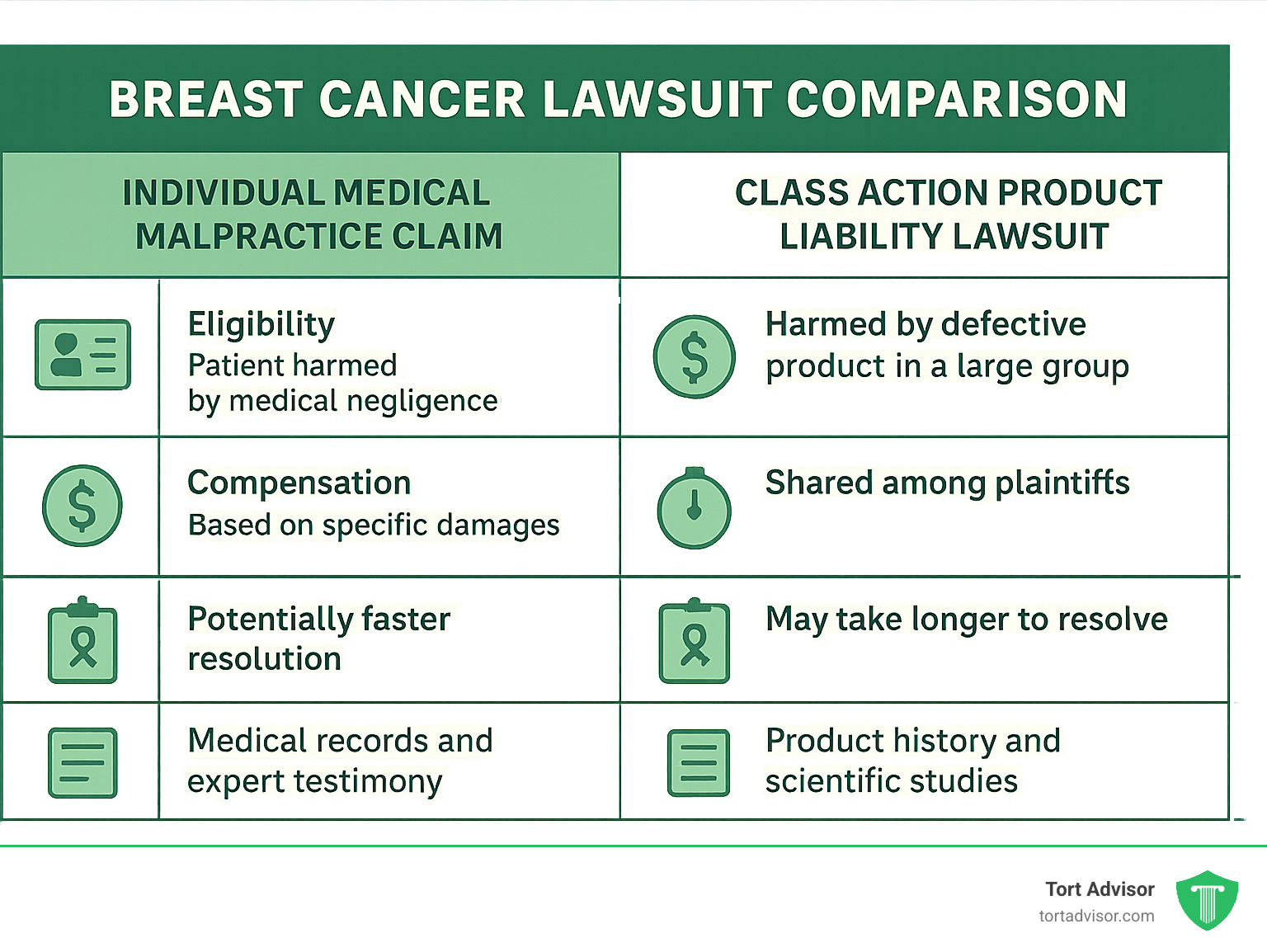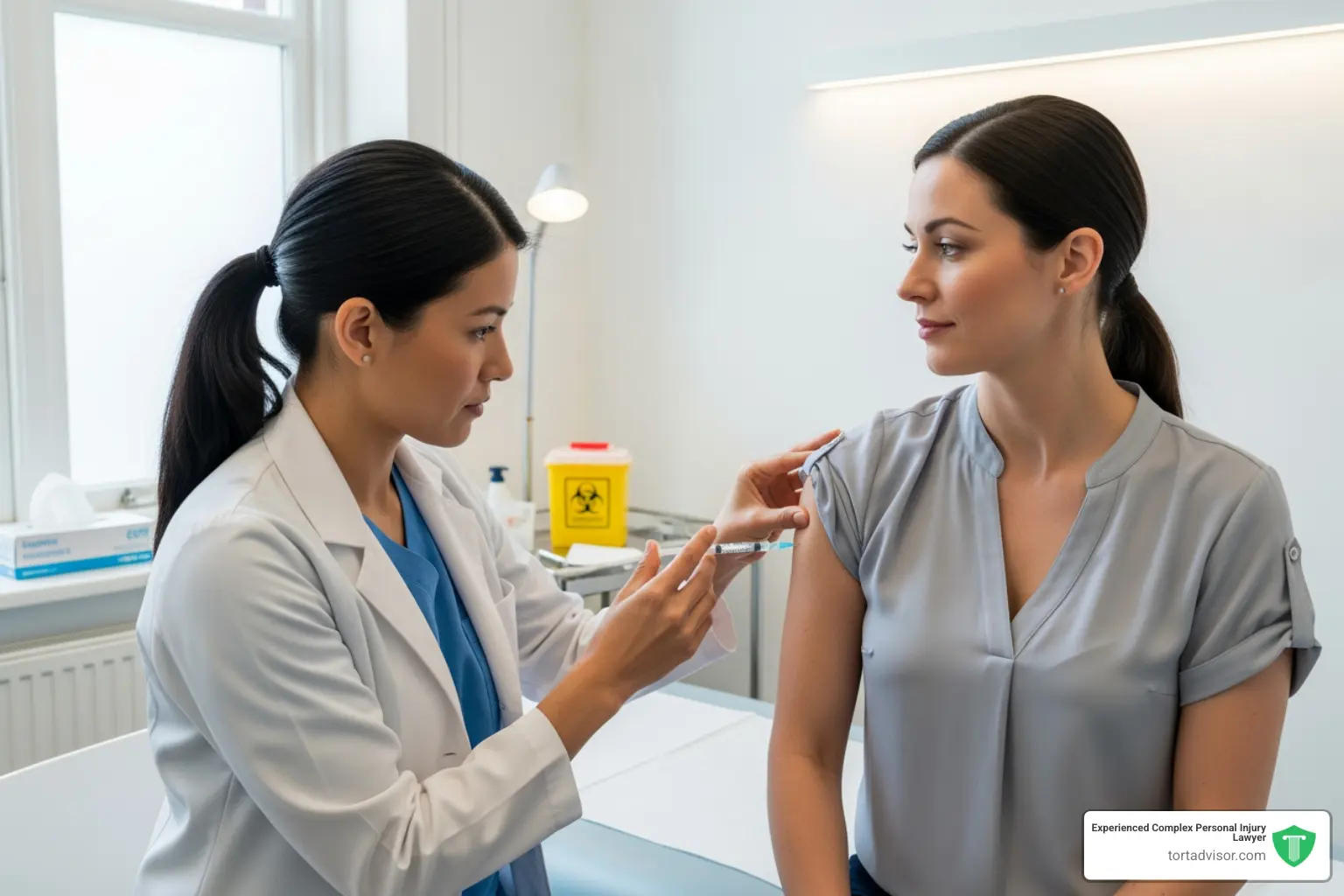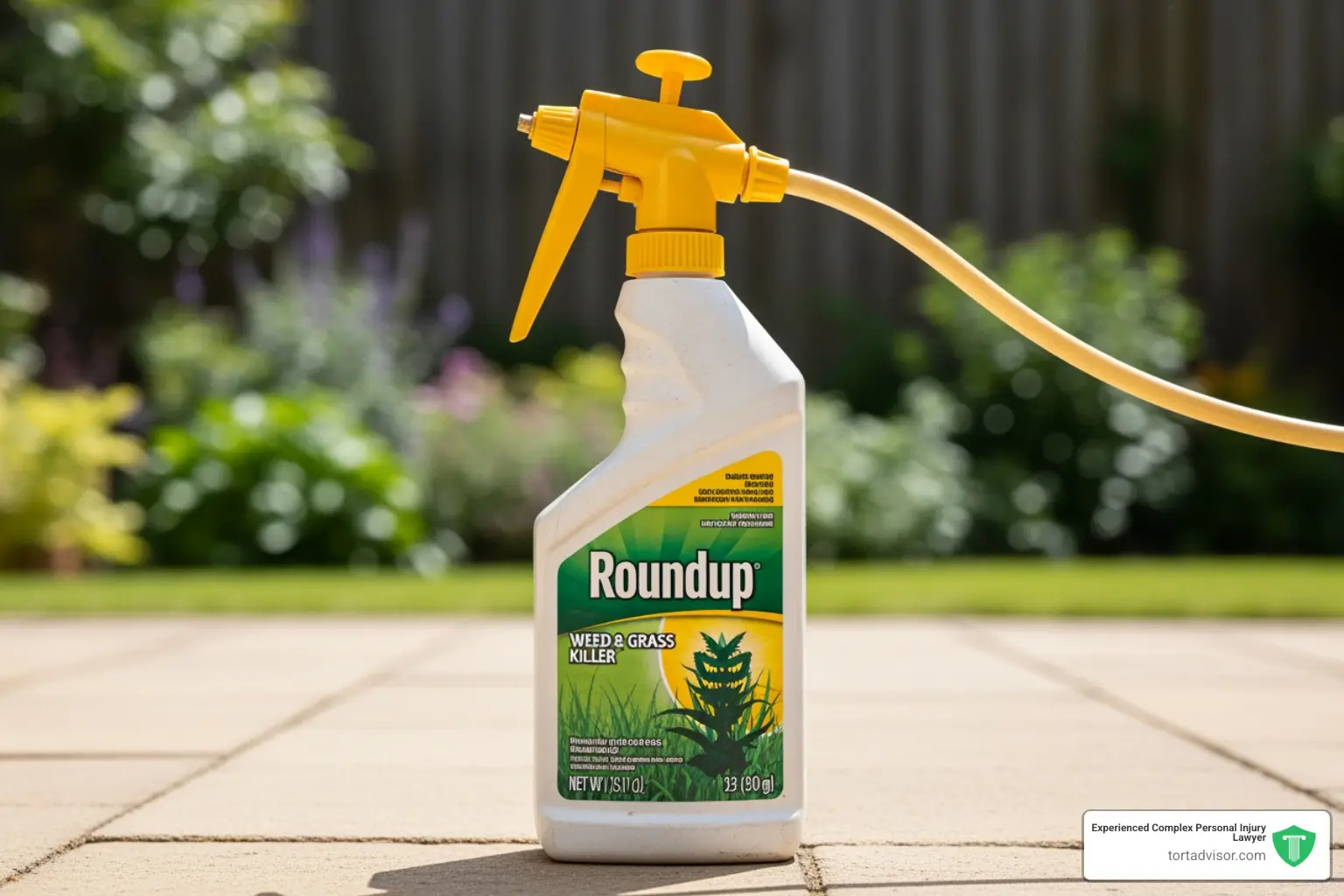


When Corporate Negligence Meets Cancer Diagnoses
A breast cancer class action lawsuit allows groups of women who developed breast cancer after using certain products or medications to seek compensation from manufacturers who failed to warn about known risks. These lawsuits often involve:
- Hair straighteners and relaxers (L’Oreal, SoftSheen-Carson)
- Textured breast implants (Allergan Biocell)
- Antipsychotic medications (Risperdal, Zyprexa)
- Zantac heartburn medication
- Medical devices like the BioZorb marker
If you used any of these products and later developed breast cancer, you may qualify to join ongoing litigation. Most cases operate on a no-fee basis, meaning you only pay if you win.
The legal landscape for these lawsuits has grown significantly. A 2022 study found women taking antipsychotic drugs had a 35% higher chance of developing breast cancer. The NIH Sister Study revealed frequent hair straightener users were more than twice as likely to develop uterine cancer, with emerging research suggesting breast cancer links as well.
These statistics represent real women seeking justice from companies that allegedly hid cancer risks for decades. I’m Mason Arnao, and through my work with technology companies in the legal industry, I’ve helped connect individuals with qualified attorneys for breast cancer class action lawsuit cases. My experience provides unique insights into how these complex legal battles unfold.

Understanding the Grounds for a Breast Cancer Lawsuit

Understanding your legal options is the first step toward justice. A breast cancer class action lawsuit targets manufacturers for allegedly dangerous products, while a medical malpractice case focuses on substandard care from a healthcare provider.
What is a Class Action Lawsuit?
A class action lawsuit provides strength in numbers. It allows many people who suffered a common injury from the same product to join forces against a large corporate defendant. This streamlined legal action makes it possible for individuals to challenge powerful corporations by sharing the costs and legal work.
For complex cases, courts often use multidistrict litigation (MDL). This process consolidates similar lawsuits from across the country before a single judge for pre-trial proceedings, making the process more efficient while keeping each person’s case individual for trial purposes.
Common Legal Claims
Lawyers build breast cancer class action lawsuit cases on several key legal theories:
- Product Liability: This holds companies responsible for ensuring their products are reasonably safe. Claims can arise from manufacturing defects (errors in production) or design defects (the product is inherently unsafe).
- Failure to Warn: This is the most common claim in these cases. It argues that a company knew about serious health risks but failed to inform consumers, which is a breach of its legal duty.
- Corporate Negligence: This claim asserts that a company acted carelessly by skipping safety tests, ignoring its own research, or failing to investigate reports of adverse events.
- Medical Malpractice: This is a separate legal path for individual cases. It typically involves misdiagnosis (missing cancer signs) or delayed diagnosis (failing to catch cancer earlier), which can allow the disease to progress to a more advanced stage.
Products & Medications Implicated in Breast Cancer Lawsuits

Several everyday products and medications have come under scrutiny for potential links to breast cancer. At Tort Advisor, we help individuals understand these complex connections and their legal options.
Hair Straighteners and Chemical Relaxers
Recent studies link frequent use of chemical hair straighteners to an increased risk of certain cancers. These products often contain endocrine-disrupting chemicals (EDCs) like phthalates and parabens that can interfere with the body’s hormones. The NIH Sister Study found that frequent users were more than twice as likely to develop uterine cancer. The Black Women’s Health Study also found evidence linking heavy use of lye-based relaxers to an increased risk of ER+ breast cancer.
As a result, companies like L’Oreal (owner of SoftSheen-Carson) face numerous lawsuits alleging they sold products without warning of the health risks. Federal lawsuits have been consolidated into a multidistrict litigation (MDL 3060) in Illinois, with over 9,800 cases pending as of early 2025.
Breast Implants (Textured and Silicone)
Textured and silicone gel breast implants have been the subject of lawsuits for years. A primary concern is Breast Implant-Associated Anaplastic Large Cell Lymphoma (BIA-ALCL), a rare non-Hodgkin’s lymphoma. The FDA has warned that Allergan‘s Biocell textured implants carry a significantly higher risk, leading to a recall of these products. Studies showed Allergan’s products posed a six times greater risk of BIA-ALCL than other textured implants.
Historically, lawsuits against makers like Dow Corning and Mentor alleged that ruptured or leaking silicone implants caused autoimmune diseases and other health issues. Current lawsuits seek compensation for medical expenses, including removal surgery and monitoring. You can find more information on breast implant lawsuits and Allergan implant settlements.
Antipsychotic Drugs like Risperdal
Antipsychotic medications like Risperdal (risperidone), Invega, and Zyprexa (olanzapine) have been linked to a higher breast cancer risk. These drugs can significantly increase prolactin levels, a hormone associated with breast tissue development. A 2022 study found that women taking these drugs had a 35% higher chance of developing breast cancer, with the risk increasing with higher doses and longer use.
Pharmaceutical companies like Johnson & Johnson and Eli Lilly are now facing breast cancer class action lawsuit claims. The lawsuits allege the companies knew of the risks for years but failed to warn patients and doctors while aggressively marketing the drugs.
Zantac (Ranitidine) and NDMA Contamination
Zantac (ranitidine), a popular heartburn medication, was found to contain unacceptable levels of N-Nitrosodimethylamine (NDMA), a probable human carcinogen. This findy led the FDA to request the removal of all ranitidine products in 2020.
While initial lawsuits focused on other cancers, some plaintiffs have alleged a link to breast cancer. These lawsuits claim manufacturers like Sanofi were negligent and failed to warn consumers. Although a federal MDL was dismissed, individuals diagnosed with breast cancer after regular Zantac use may still file individual lawsuits.
Medical Devices like BioZorb Implants
The BioZorb marker, a 3D device used after a lumpectomy to guide radiation, has been linked to serious complications. These include migration, infection, tissue damage, chronic pain, and disfigurement, sometimes requiring additional surgeries. The FDA issued a Class I recall, its most serious designation, due to the risk of severe injury or death.
As a result, breast cancer survivors are filing product liability lawsuits against the manufacturer, Hologic, Inc. The lawsuits claim the device was defectively designed and that the company failed to warn of the risks while marketing it for unapproved uses.
Do You Qualify for a Breast Cancer Class Action Lawsuit?

Determining if you qualify for a breast cancer class action lawsuit depends on the product involved. Generally, you need proof of product use, a medical diagnosis of breast cancer, and a reasonable correlation between the two. It is crucial to act quickly due to each state’s statute of limitations, which sets a strict time limit for filing. A free legal consultation can help you understand your eligibility without any upfront cost.
Who Can Join a Hair Straightener Lawsuit?
To qualify, you typically need:
- A history of frequent use of chemical hair straighteners or relaxers (e.g., more than four times a year for several years).
- A specific cancer diagnosis, such as uterine cancer or ER+ breast cancer.
- Proof of purchase is helpful but not always required.
Who is Eligible for a Breast Implant Claim?
Eligibility often depends on:
- The type of implant you received, particularly Allergan Biocell textured implants, which were recalled by the FDA.
- A diagnosis of Breast Implant-Associated Anaplastic Large Cell Lymphoma (BIA-ALCL).
- Medical and surgical records confirming the implant type and diagnosis. For more information, see these details on Allergan implant settlements.
Who Qualifies for a Risperdal or Zantac Lawsuit?
For medication-related lawsuits, you will generally need:
- A clear prescription history for drugs like Risperdal, Zyprexa, or Zantac.
- A specific duration of use (e.g., at least two years for some antipsychotics).
- A breast cancer diagnosis that occurred after taking the medication, with a clear timeline correlation.
Navigating the Legal Process: Steps, Compensation, and Outcomes

Understanding the legal process can help you feel more prepared. At Tort Advisor, we connect you with experienced lawyers who specialize in breast cancer class action lawsuit cases and can guide you through every step.
First Steps to Take if You Suspect You Have a Case
Building a strong case starts with preparation. First, gather your medical evidence, including pathology reports, treatment records, and prescription histories. Next, document your product use, noting brands and frequency. Receipts are helpful but not always essential. Finally, consult with an attorney for a free case evaluation. It is vital to understand your state’s statute of limitations, as missing this strict deadline can prevent you from seeking compensation.
Compensation and Damages in a Breast Cancer Class Action Lawsuit
Compensation aims to cover the financial and personal impact of your diagnosis. Damages can include:
- Economic Damages: These cover calculable financial losses like medical expenses (past and future), lost wages, and reduced earning capacity.
- Non-Economic Damages: These address intangible impacts such as pain and suffering, emotional distress, and loss of enjoyment of life.
- Punitive Damages: These may be awarded to punish companies for egregious behavior, like hiding known cancer risks, and to deter future misconduct.
Settlement amounts vary widely. For example, historical breast implant cases saw payouts from tens of thousands to over a million dollars. Attorneys estimate potential settlements for hair relaxer uterine cancer cases could range from $300,000 to $1.75 million.
Potential Lawsuit Outcomes
A breast cancer class action lawsuit can resolve in several ways:
- Settlement: This is the most common outcome. The defendant pays into a fund that is distributed among plaintiffs, providing a certain and often faster resolution than a trial.
- Jury Verdict: If a case goes to trial, a jury decides the outcome. Verdicts can be substantial but are also unpredictable.
- Case Dismissal: A court may dismiss a case for insufficient evidence, though this is less common in well-established litigation.
- MDL Process: Most large-scale cases are consolidated into a Multidistrict Litigation (MDL) for efficiency. The MDL process often uses bellwether trials (test cases) to gauge jury reactions and guide settlement negotiations. For instance, the hair relaxer MDL has bellwether trials scheduled for 2027, which will help clarify how the remaining cases might resolve.
Frequently Asked Questions about Breast Cancer Lawsuits
Considering legal action while dealing with a breast cancer diagnosis can be overwhelming. Here are answers to some of the most common questions.
How much does it cost to join a class action lawsuit?
Joining a breast cancer class action lawsuit costs nothing upfront. Attorneys work on a contingency fee basis, which means you pay no fees unless they win your case or secure a settlement. If the case is successful, the attorney’s fee is a percentage of the compensation you receive. If the case is not successful, you owe nothing for legal fees. Most firms also offer a free initial consultation to discuss your case without financial commitment, making justice accessible to everyone.
How long do these lawsuits typically take to resolve?
The timeline for a breast cancer class action lawsuit varies, ranging from months to several years. Factors influencing the duration include the complexity of the case, the involvement of multidistrict litigation (MDL), the length of settlement negotiations, and court schedules. The MDL process, for example, involves extensive findy and bellwether trials that can extend the timeline but often lead to better-informed resolutions. The hair relaxer MDL has test trials scheduled for 2027. An experienced attorney can provide a more specific timeline based on your case.
What is the difference between a product liability lawsuit and a medical malpractice claim?
The key difference is who you are suing and why.
- A product liability lawsuit targets the manufacturer of a defective or dangerous product (e.g., L’Oreal, Allergan, Johnson & Johnson). The legal claim centers on the product itself, arguing it was unsafe or the company failed to warn of risks.
- A medical malpractice claim targets a healthcare provider (doctor, hospital) for causing harm through negligence or substandard care. This could involve a misdiagnosis or a surgical error. The legal claim centers on the provider’s actions, not a product.
These two types of cases follow different legal paths, have distinct legal standards, and require different evidence.
Conclusion: Seeking Justice and Holding Companies Accountable
A breast cancer diagnosis is challenging, and finding a link to a trusted product adds an emotional and financial burden. You are not alone in this fight. A breast cancer class action lawsuit is a powerful tool for holding corporations accountable for negligence. These legal actions seek compensation for victims and push manufacturers to prioritize consumer safety with better testing and warnings.
If you were diagnosed with breast cancer after using one of the products discussed, we encourage you to explore your legal options. Acting promptly is critical due to the statute of limitations.
At Tort Advisor, our mission is to connect you with highly skilled specialty attorneys with proven results in these complex cases. Your fight for justice can lead to greater corporate accountability and consumer safety for all. To understand your legal rights, we invite you to find a qualified attorney for a free consultation to see if you qualify for a breast cancer class action lawsuit.
Find a qualified personal injury attorney for your case
Free Confidential Case Evaluation
Complete the short form below to get an immediate FREE case review with an expert in your specific claim. Don't wait, your case could be time sensitive to file a claim.
Related Posts
Did a North Dakota product cause harm? Understand product liability, your rights, and how to take action for defects.
Get justice for clergy abuse. Find an expert Priest abuse lawyer to navigate complex laws and hold institutions accountable.
Diagnosed with meningioma after Depo-Provera? Understand potential Depo-Provera lawsuit settlements, risks, & how to claim compensation.
Uncover the truth about uber sexual assault cases. Learn about the alarming scale, Uber's accountability, and legal options for justice.
Facing wildfire losses? Discover the best wildfire lawsuit attorneys in California to fight for your full recovery and justice.
Exposed to Roundup & diagnosed with NHL? Discover how to sue Monsanto, understand eligibility, & seek compensation. Your guide to justice.





